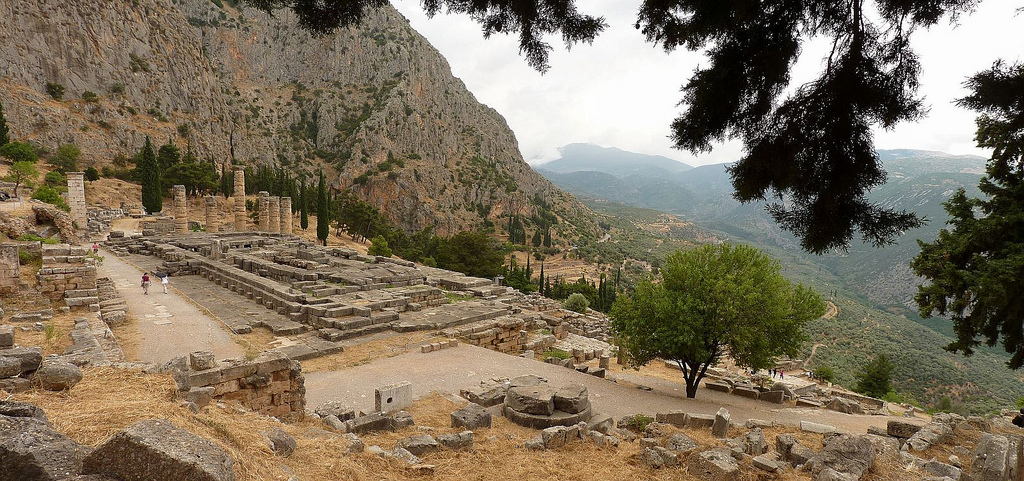The ancient Greeks considered Delphi the centre of the world.
According to mythological tradition, Zeus released four eagles from the four corners of the Earth, which was believed to be flat, and they met at Delphi, which was henceforth known as the navel of the world, or omphalos.
From the time in which the gods emerged from Chaos, Delphi was ruled by Gaea, the Earth goddess and the first prophetess. Her territory comprised a rocky cave, whose vapours had prophetic properties, and a sacred spring, which was guarded by her offspring, the serpent Python.

© Photo credits by Ronny Siegel under CC-BY-2.0
The foundation myth of the shrine is told in the Homeric Hymn to Apollo, which recounts that Apollo, after wandering far and wide in search of a site for his own oracle, reached the slopes of Mount Parnassus, where he found the spring guarded by Python.
Here he slew the monster with an arrow and left it to decompose on the ground, hence the serpent’s name (from the Greek verb pythestai, meaning “to rot”).
This feat earned Apollo the epithet of “Pythian”. According to the myth, Apollo inherited both the protection and the powers of the mysterious and primeval force of nature that issued from the cave, delegating the interpretation and communication of his will to the oracles of a priestess, known as the Pythia.
Ancient sources reveal that the Pythia was originally a young woman from Delphi. However, according to tradition, from the fifth century BC the role was entrusted to an older woman (at least 50 years old) of irreprehensible conduct, following the rape of one of the girls by a Thessalonian.

Do you want to know more about Delphi and the history of Greece?
Check out our guidebook to Ancient Greece, with detailed history and Past & Present images of the Acropolis, the Parthenon, Delphi and all the greatest historical and archaeological sites of Ancient Greece.

